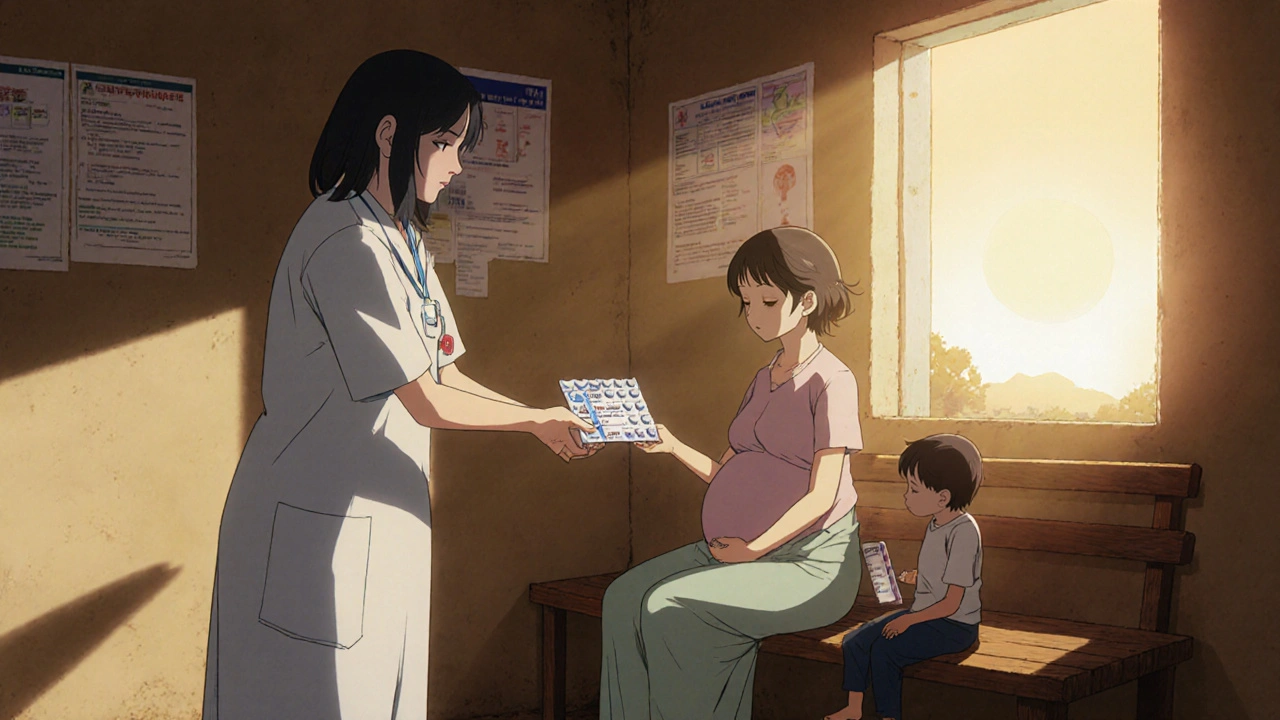
Select drugs to compare based on key clinical factors:
Select at least 2 drugs to compare
| Criteria | Nevirapine (Viramune) | Efavirenz | Dolutegravir | Raltegravir | Doravirine |
|---|---|---|---|---|---|
| Resistance Barrier | Low-moderate | Low-moderate | High | Moderate | Moderate-high |
| Dosing | 200 mg BID | 600 mg QD | 50 mg QD | 400 mg BID | 100 mg QD |
| Pregnancy Safety | Category C | Category D | Category C | Category C | Category C |
| Major Side Effects | Rash, hepatotoxicity | Neuropsychiatric, rash | Insomnia, headache | Stomach upset | Rash, nausea |
| Drug Interactions | CYP3A4/CYP2B6 | Strong CYP inducers | Minimal | Renal excretion | CYP3A4 |
When a clinician needs to pick an NNRTI or consider a switch to a newer class, the decision hinges on more than just price. Nevirapine comparison helps you weigh efficacy, safety, dosing convenience, and resistance risk against the most common alternatives on the market today.
Nevirapine (marketed as Viramune) is a non‑nucleoside reverse transcriptase inhibitor (NNRTI) approved for the treatment of HIV‑1 infection. It works by binding directly to the reverse transcriptase enzyme, causing a conformational change that halts viral DNA synthesis. First introduced in 1997, Nevirapine quickly became a staple of first‑line therapy, especially in resource‑limited settings due to its low cost and availability as a fixed‑dose combination.
Key pharmacokinetic facts: oral bioavailability is ~90%, peak plasma concentrations appear within 4-5 hours, and the drug has a half‑life of about 45 hours, allowing twice‑daily dosing. Nevirapine is metabolised primarily by CYP3A4 and CYP2B6, which explains many drug‑interaction alerts.
HIV treatment guidelines have evolved. Newer agents boast higher barriers to resistance, once‑daily regimens, and improved safety profiles for pregnant patients. Comparing Nevirapine with these options lets clinicians decide whether to keep a patient on a proven, inexpensive regimen or switch to a drug that may reduce side‑effect burden or simplify adherence.

Efavirenz is another first‑generation NNRTI. It shares a similar mechanism with Nevirapine but is dosed once daily and carries a higher risk of central nervous system (CNS) side effects, such as vivid dreams and dizziness.
Dolutegravir belongs to the integrase strand transfer inhibitor (INSTI) class. It offers a potent barrier to resistance, once‑daily dosing, and fewer drug-drug interactions, making it a favored component of modern first‑line regimens.
Raltegravir is the first‑in‑class INSTI. While effective, it requires twice‑daily dosing and has a slightly lower resistance barrier compared with Dolutegravir.
Doravirine is a newer NNRTI designed to improve tolerability. It maintains efficacy against many NNRTI‑resistant strains and is taken once daily.
Other noteworthy agents include Lopinavir/ritonavir (a protease inhibitor boost), and Ritonavir‑boosted Atazanavir, both of which are used when NNRTI or INSTI options are contraindicated.
| Drug | Class | Typical Dose | Resistance Barrier | Common Side Effects | Pregnancy Category | Major Drug‑Interactions |
|---|---|---|---|---|---|---|
| Nevirapine (Viramune) | NNRTI | 200 mg BID (after 2‑week lead‑in) | Low‑moderate | Rash, hepatotoxicity, nausea | Category C (WHO recommends only if benefits outweigh risks) | CYP3A4 & CYP2B6 substrates - avoid strong inducers (e.g., rifampicin) |
| Efavirenz | NNRTI | 600 mg QD | Low‑moderate | Neuropsychiatric symptoms, rash, lipodystrophy | Category D (Teratogenic risk) | Strong CYP inducers reduce levels; many antacids increase absorption |
| Dolutegravir | INSTI | 50 mg QD (or 25 mg QD with rifampicin) | High | Insomnia, headache, weight gain | Category C (considered safe after first trimester) | Minimal CYP interaction; avoid polyvalent cations (e.g., calcium, iron) |
| Raltegravir | INSTI | 400 mg BID | Moderate | Stomach upset, headache | Category C | Urinergic excretion - dose adjust in severe renal impairment |
| Doravirine | NNRTI (next‑gen) | 100 mg QD | Moderate‑high | Rash, nausea, dizziness (less frequent than Efavirenz) | Category C | Metabolised by CYP3A4 - avoid strong inducers |
Despite newer agents, Nevirapine remains a solid choice in several scenarios:

Monitoring: Baseline liver function tests (LFTs) are a must. Repeat LFTs at weeks 2, 4, 8, and then quarterly if stable. Watch for rash, especially in the first 6 weeks - severe reactions may require immediate discontinuation.
Adherence support: Twice‑daily dosing can be a barrier. Pair Nevirapine with a fixed‑dose combination (e.g., with stavudine and lamivudine) to reduce pill burden.
Cost analysis: Generic Nevirapine can be sourced for <$5/month in many low‑income countries, whereas dolutegravir, while still cheap, often costs $20‑30/month in high‑income markets.
Resistance testing: If a patient shows virologic failure, genotype the reverse transcriptase region. Mutations K103N or Y181C strongly reduce Nevirapine efficacy.
Nevirapine is classified as WHO Category C. It can be used after the first trimester when the benefits outweigh potential risks, especially where other NNRTIs are not affordable.
Dolutegravir has a high resistance barrier - single mutations rarely cause failure. Nevirapine’s barrier is low‑moderate; common mutations like K103N can render it ineffective.
Rash (up to 15 % of patients) and elevations in liver enzymes are the main concerns. Severe hepatitis is rare but requires immediate drug cessation.
Rifampicin induces CYP3A4, lowering Nevirapine levels. A dose increase to 400 mg twice daily is sometimes used, but close viral load monitoring is essential.
Dolutegravir and Doravirine both allow once‑daily dosing without food restrictions, making them the most convenient options.
Honestly, prescribing Nevirapine these days feels like a moral compromise between fiscal prudence and patient safety, and it's a line many clinicians tread with uneasy shoulders. The drug's low cost is undeniably attractive, especially in under‑funded clinics, yet its modest resistance barrier demands vigilant monitoring that many resources simply cannot guarantee. When you weigh the rash and hepatotoxicity risks against the lure of a cheap regimen, the scales tip toward a conscientious assessment rather than blind cost‑cutting. It's not just about saving pennies; it's about safeguarding lives from preventable treatment failures. In the grand scheme, the ethical duty to minimize harm should outrank the allure of a bargain.
Nevirapine remains a viable NNRTI in settings where budget constraints dominate, but modern INSTIs like dolutegravir offer a higher barrier to resistance with once‑daily dosing. From a pharmacokinetic standpoint, the lower interaction profile of INSTIs reduces the need for intensive LFT monitoring. If the clinic can secure generics of dolutegravir, the switch is often justified. Nonetheless, the cost differential still matters for many programs.
The shadow of a rash flaring up in the first weeks can feel like an emotional avalanche, draining hope from both patient and provider alike. Watching liver enzymes climb without warning feels like a silent scream inside the clinic walls. The weight of that uncertainty lingers long after the prescription is written, feeding a subtle desperation that no textbook can capture. It’s a reminder that every pill carries a story of anxiety, not just chemistry.